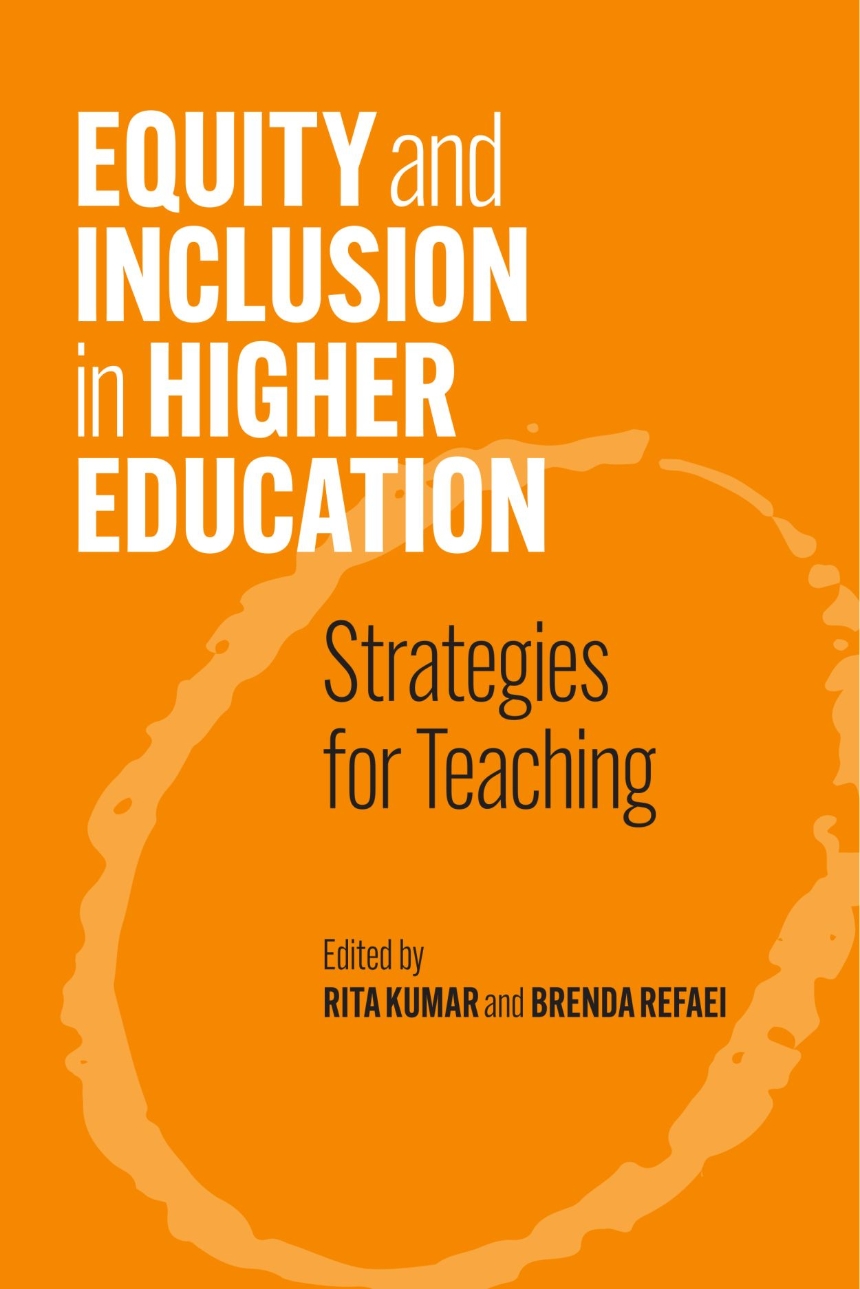Distributed for University of Cincinnati Press
Equity and Inclusion in Higher Education
Strategies for Teaching
Americans’ perception of college students does not correlate with the reality of the rich diversity seen on university campuses. Over 60% of Americans believe the average age of a college student is 20 years old but, in fact, it’s 26.4 years old. Demographics in the classroom are shifting and instructors bear a responsibility to adjust their teaching style and curriculum to be inclusive for all students.
Equity and Inclusion for Higher Education Strategies for Teaching, edited by Rita Kumar and Brenda Refaei, details the necessity for an inclusive curriculum with examples of discipline-specific activities and modules. The intersectionality of race, age, socioeconomic status, and ability all embody the diversity college instructors encounter in their classrooms. Through the chapters in this book, the contributors make apparent the "hidden curriculum," which is taught implicitly instead of explicitly. The editors focus on learner-centered environments and accessibility of classroom materials for traditionally marginalized students; a critical part of the labor needed to create an inclusive curriculum.
This text provides instructors with resources to create equity-based learning environments. It challenges instructors to see beyond Eurocentric curriculums and expand their pedagogy to include intercultural competence. The contributors challenge the student/instructor dichotomy and embrace collaboration between the two to construct a curriculum that fits all students' needs. The resources and examples in this book demonstrate the importance of inclusion and equity in the classroom. A companion community page provides examples and tools from the editors and contributing authors, which allows for readers to add materials from their own classrooms. This book and collaborative toolkit allow instructors to begin intentional practice of an inclusive curriculum and implement changes to promote respect for diversity.
Reviews
Table of Contents
Part I: SETTING UP INCLUSIVE LEARNING ENVIRONMENTS
Chapter 1: Six Principles of an Inclusive Syllabus Design
Chapter 2: Student-Centered Teaching for Equity and Inclusion in Very Large Multidisciplinary Classes
Designing and Facilitating Equitable and Inclusive Online Courses
Part II: CREATING INCLUSIVE CLASSROOMS IN THE SOCIAL SCIENCES
Chapter 4: Perspectives of Inclusion in the Social Sciences
Chapter 5: Pedagogies of Microresistance for Equity and Social Justice
Part III INCLUSIVE HUMANITIES
Chapter 6: Increasing Inclusion and Lowering Student Anxiety
Chapter 7: Incorporating Equity and Inclusion in English Composition and Literature Courses
Part IV: INCLUSIVE STEM
Chapter 8: Flexible Approaches for Equitable Mathematics for All
Chapter 9: Strategies for Incorporating Inclusive Pedagogy in STEM Courses
Chapter 10: Increasing Student Persistence through Active Learning Pedagogies
Part V: INCLUSIVE PROFESSIONAL PRACTICE
Chapter 11: Creating a Culture of Respect: Utilizing Transformative Learning
Chapter 12: Cultivating Cultural Awareness in the Dental Hygiene Classroom
Chapter 13: Teaching the Concepts of Diversity and Inclusion in Business Classes
Part VI: INCLUSIVE ASSESSMENT
Chapter 14: Measuring the Impact of Pedagogical Efforts for Equity and Inclusion
Chapter 15: Is Your Teaching Inclusive? An Inclusive Teaching Rubric for Higher Education

